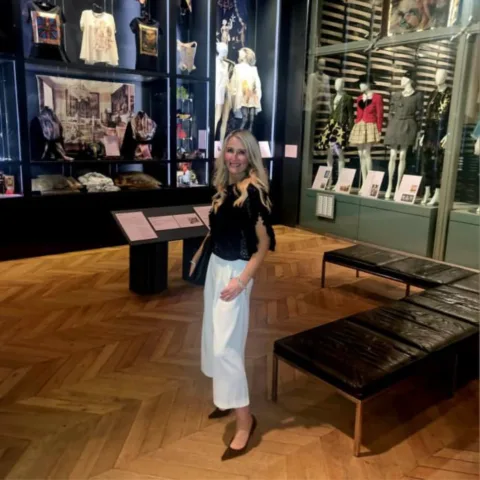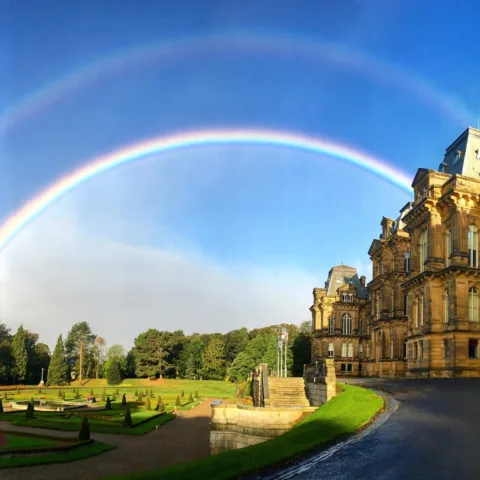The Bowes Museum Blog

Bringing Up The Bodies
Now seemed as good a time as any to climb the wooden stairs to the attic and tackle the rather crowded mannequin store. Located in the highest point in the roof, and overlooking the green fields and bowling green below, we were faced with a stack of bodies, and body parts, dating back to the beginning of the 20th century. All tangled in a heap, and with more than a little dust, but hopefully no spiders, myself, and volunteer Claire, chose the hottest day of the year so far to heave and haul and work up an appetite for lunch.
The Bowes Museum has a fantastic costume collection, highlights of which have always been on show to the public. Our collection of mannequins reflects the changing styles of display, and the changing shapes of people’s bodies. Currently we’re favouring acrylic figures, which show off our costume inside and out and are conservation friendly.
The older mannequins are often from shop window displays, made of yellowing paper mache, or painted plaster, and are deteriorating and showing signs of their age.
Rummaging through the cardboard boxes and overstuffed shelves, we’ve uncovered gems from the early 20th century, the 1930s, 1950s, and beyond, along with odd arms, legs and heads which have long-since lost their torsos.
Working in a museum, we love holding on to old things, so although we won’t use them again to display costume (they aren’t up to our exacting standards), we’ll be keeping them. After a quick vacuum, and brushing off the cobwebs, they’ve all been neatly bagged. We’ll store them safely, making sure they don’t get damaged any further, and maybe one day we can get some out on display in their own right – they are part of the museum’s history after all.
By Katy Smith, Textile Conservator












